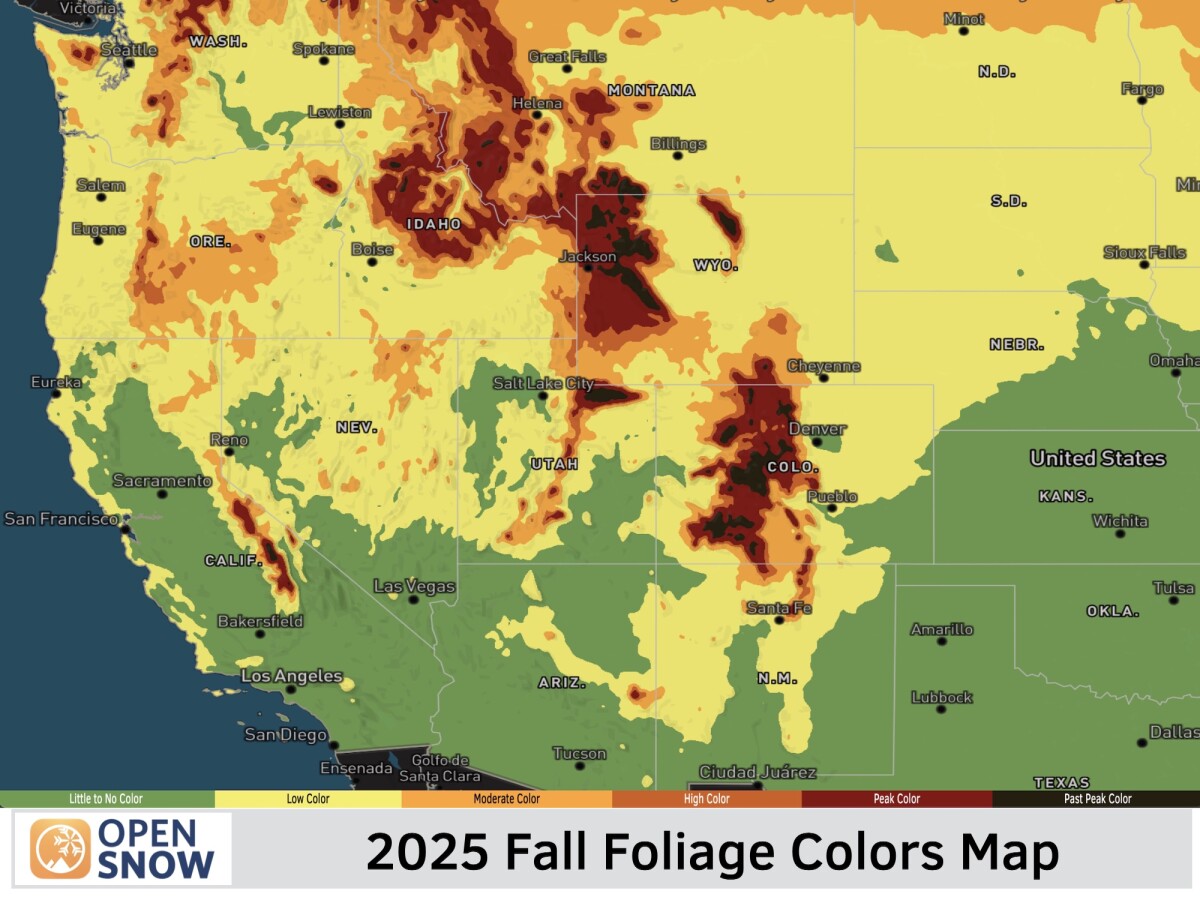Western US Daily Snow

By Alan Smith, Meteorologist Posted 1 year ago June 28, 2024
Weekend T-Storms Favoring Colorado & New Mexico
Summary
The focus of monsoon moisture will be confined to Colorado and New Mexico heading into the weekend, with a gradual expansion into Eastern Arizona on Sunday. A low pressure system will also track across northern areas on Sunday-Monday, bringing light showers to the Cascades and heavier showers and thunderstorms to parts of the Northern Rockies, especially SW Montana.
Short Term Forecast
Big Picture Weather Pattern:
A trough of low pressure moved across the Northern Rockies on Wednesday and Thursday, and drier has moved into the Interior West from Idaho to Utah to Arizona behind this trough.
Moisture will remain over Colorado and New Mexico on Friday and Saturday, with a gradual expansion westward into Arizona by Sunday.
Meanwhile, a weaker trough will move across the Northwest and Northern Rockies on Sunday and Monday. The Cascades will only see light showers from this system, while richer moisture and higher levels of instability will result in more numerous storms over Southwest Montana.

5-Day Precipitation Forecast:
Colorado, New Mexico, and Eastern Arizona will see the most rainfall over the next 5 days, while Southwest Montana and Yellowstone National Park will also see some decent totals. Heavier rain totals are also expected north of the border in Canada.

Forecast for Fri (Jun 28) to Sat (Jun 29):
Colorado and Northeast New Mexico will see the most widespread thunderstorm activity with more isolated storms and lighter rainfall in Utah and Arizona. Lingering showers over the Northern Rockies on Friday will give way to a drying trend on Saturday, while the Cascades and Olympics will see some light showers on Saturday.

In Colorado, storms are possible statewide but northwest areas will be most favored on Friday, including Park Range, Flat Tops, Elk Range, and Grand Mesa. On Saturday, the focus will shift into Southeast Colorado including Pikes Peak and the adjacent plains, and to a lesser extent the Front Range and Sangre de Christo Range.

Forecast for Sun (Jun 30) to Mon (Jul 1):
Thunderstorm activity will pick up across the Four Corners region with locally heavy rain possible in Colorado, New Mexico, and Eastern Arizona, while most of Utah will see drier conditions. The Cascades will also see light showers while the Northern Rockies will see more numerous showers and thunderstorms.

Colorado:
Southwest portions of the state will be most favored for thunderstorms, including the San Juans, Elks, and Grand Mesa.

New Mexico:
Northern and western portions of New Mexico will be most favored for thunderstorms with more isolated storms and light/spotty across South Central New Mexico including Ruidoso.

Arizona:
Eastern Arizona will be most favored, especially over the eastern side of the Mogollon Rim, with fewer thunderstorms and lighter rainfall around the Grand Canyon.

Northern Rockies:
Southwestern portions of Montana, including the Madison, Gallatin, and Beartooth Ranges, as well as Yellowstone National Park and the Northern Bighorns in Wyoming will be most favored for thunderstorms.
Activity will be lighter and more isolated further south into the Tetons and also across Northern Montana including Glacier. However, heavier rainfall is expected north of the border in the Columbia Mountains of British Columbia.

Forecast for Tue (Jul 2) to Wed (Jul 3):
A northwest flow pattern will keep shower and thunderstorm chances going across the Northern Rockies, favoring areas along and east of the Divide in Montana and Northern Wyoming.
Moisture will decrease across Western Colorado with drier conditions expected, while the eastern ranges (Front Range and Sangres) will hang onto thunderstorm chances. Monsoonal moisture will gradually expand in coverage across Southern New Mexico and Arizona with an uptick in storms for these areas.

Extended Forecast
Outlook for Thu (Jul 4) to Mon (Jul 8):
There are some model disagreements for the Fourth of July weekend. The European (pictured below) and Canadian Models favor a ridge of high pressure setting up over the West Coast with very hot temperatures for California.
This ridge would also suppress monsoonal moisture into Southern Arizona and New Mexico with lesser chances for Utah and most of Colorado due to drier northwest winds aloft. The exception would be the eastern slopes of the Rockies from Montana to Colorado where moisture and thunderstorm chances look greater.

The American GFS Model, on the other hand, projects the high pressure ridge to set up over the Rockies, which would result in hotter temperatures for the Intermountain West. However, this pattern would also favor monsoonal moisture extending northward into Utah and Colorado over the holiday weekend.
The American GFS is the outlier for now of the three major medium-range ensemble models, but we'll revisit this early next week.
Thanks so much for reading and have a great weekend! Next update on Monday (July 1).
Alan Smith
About Our Forecaster




